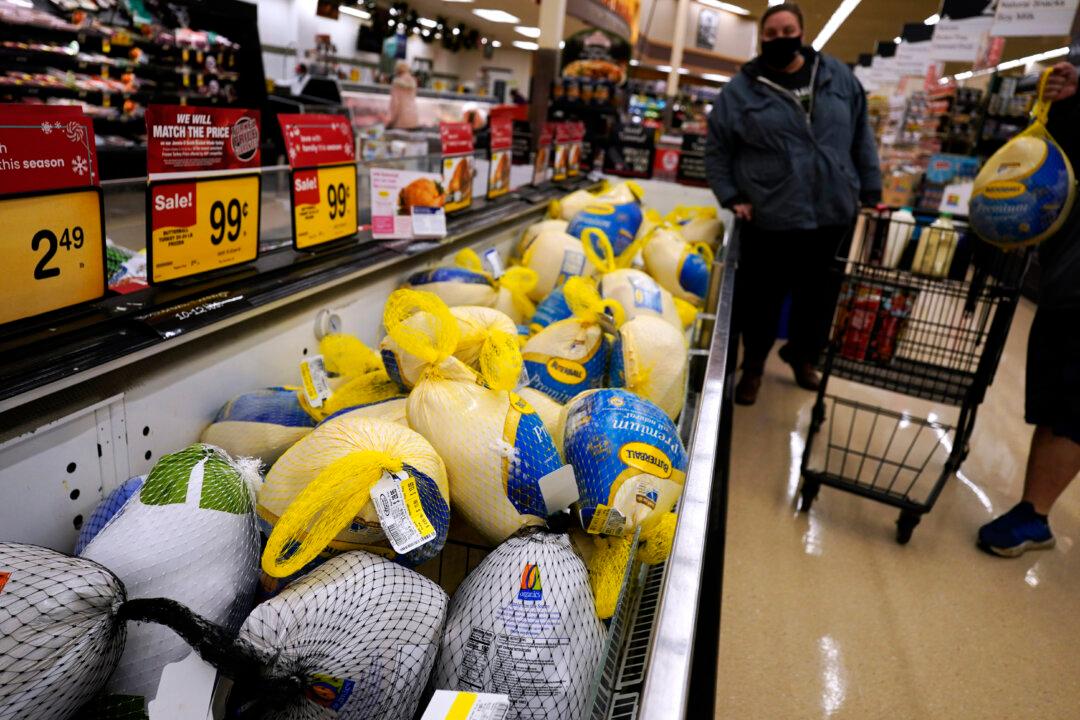Families can expect to pay 20 percent more to host a Thanksgiving dinner this year as food inflation continues to climb, the American Farm Bureau Federation (AFBF) stated in a new report.
According to the group’s 37th annual survey, the average cost of a Thanksgiving feast for 10 will be $64.05, or about $6.50 per person. This is up 20 percent, or $10.74, from last year.





